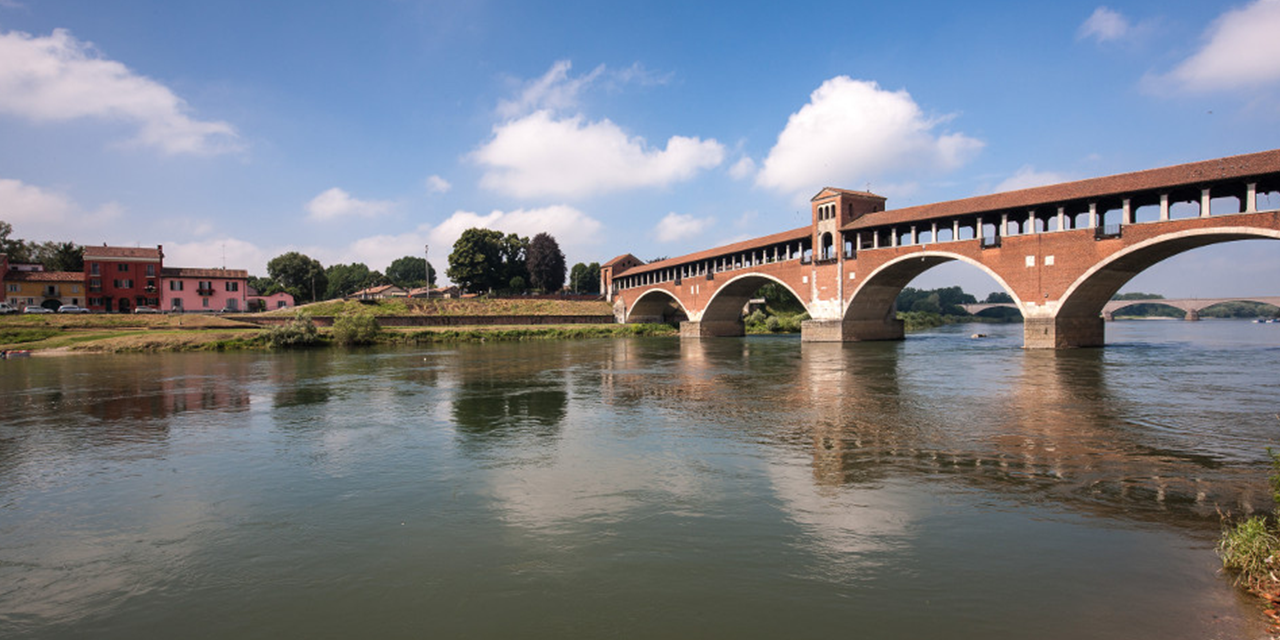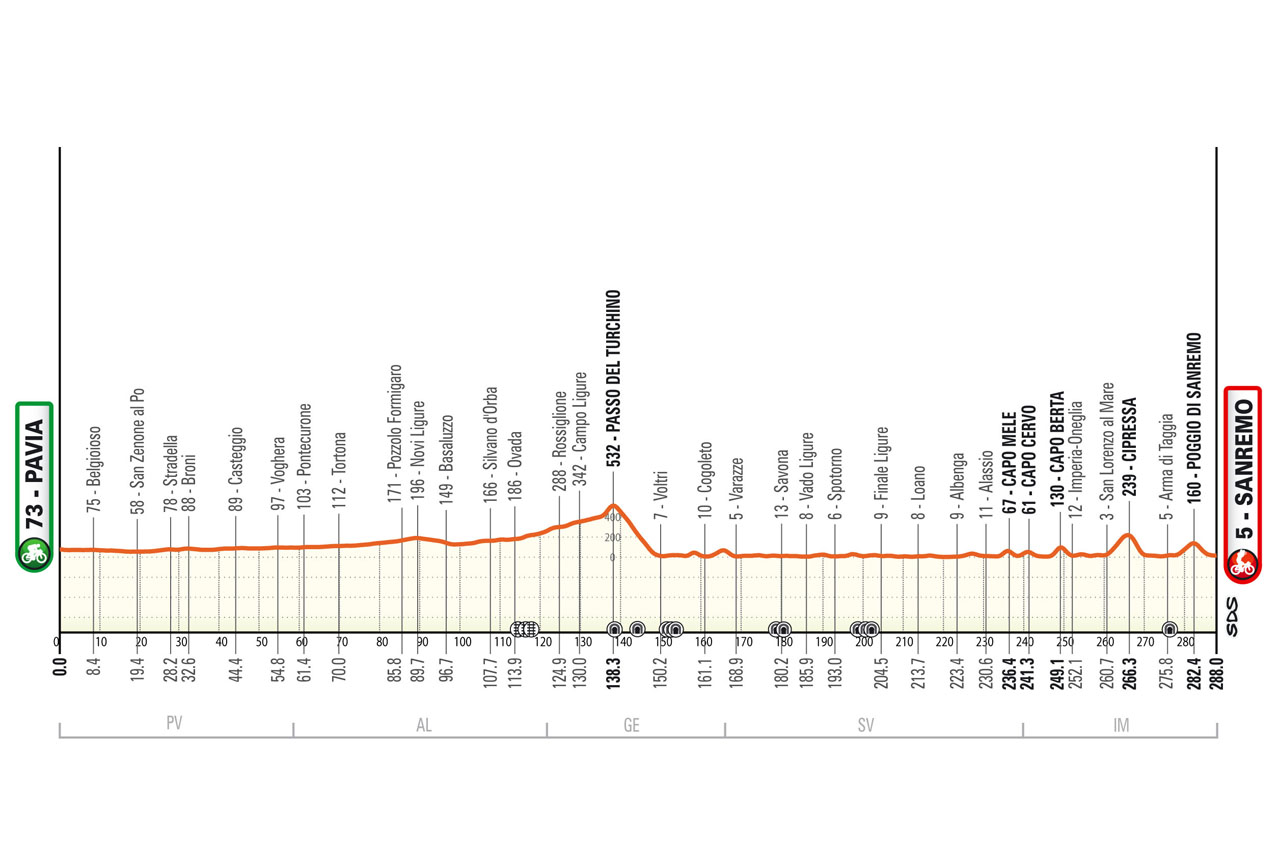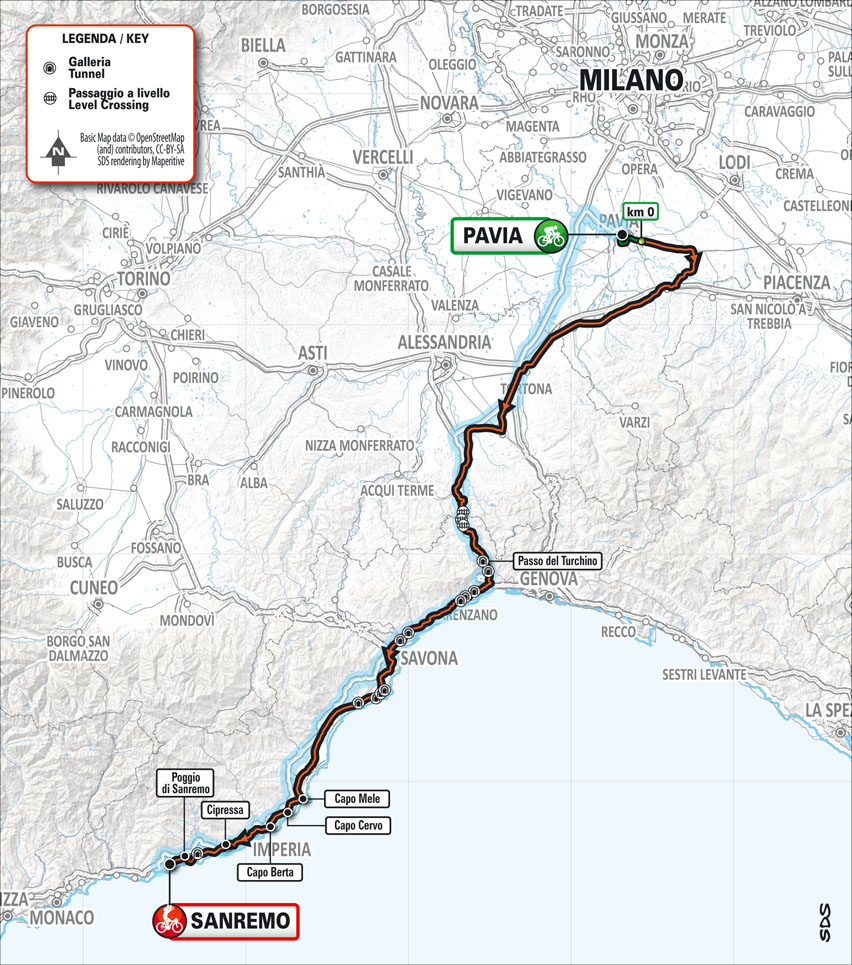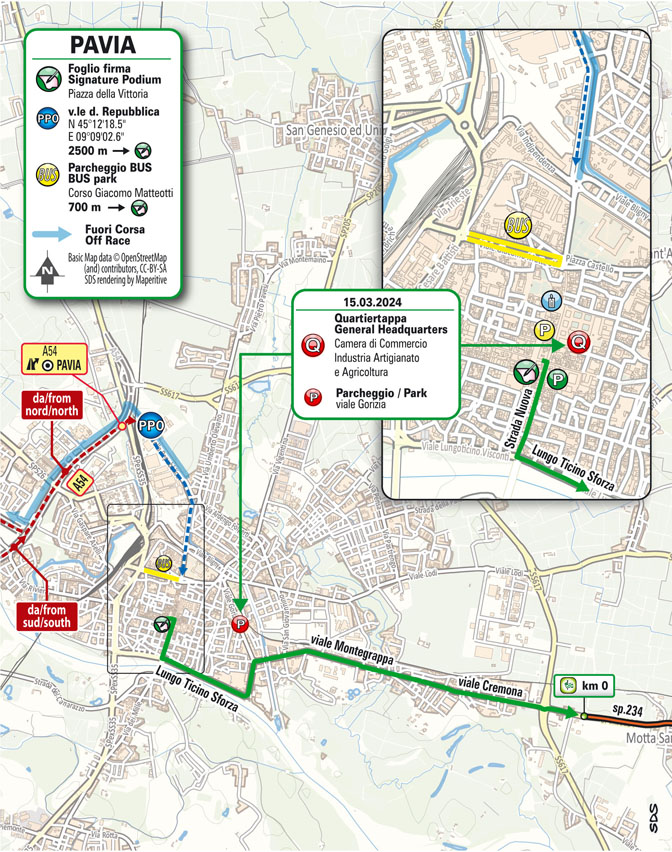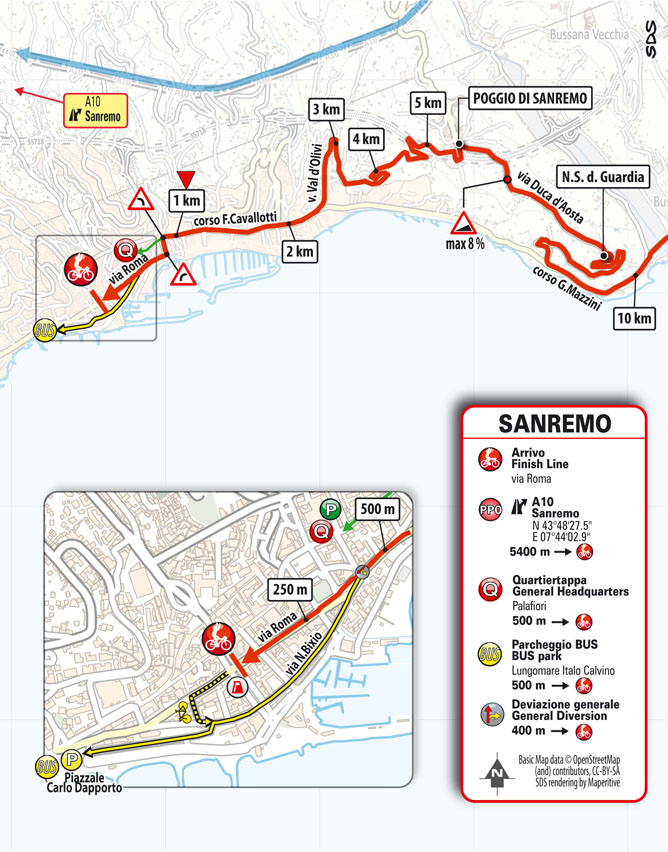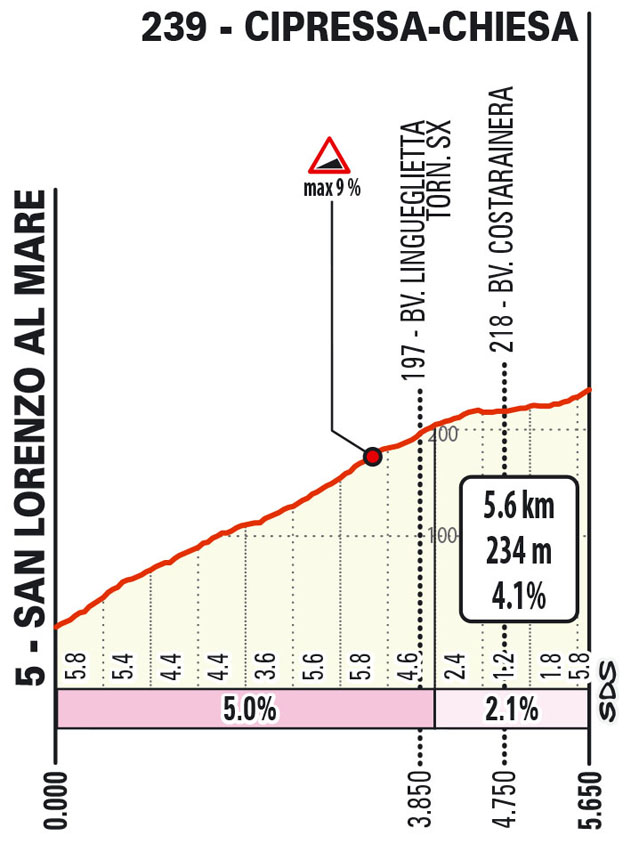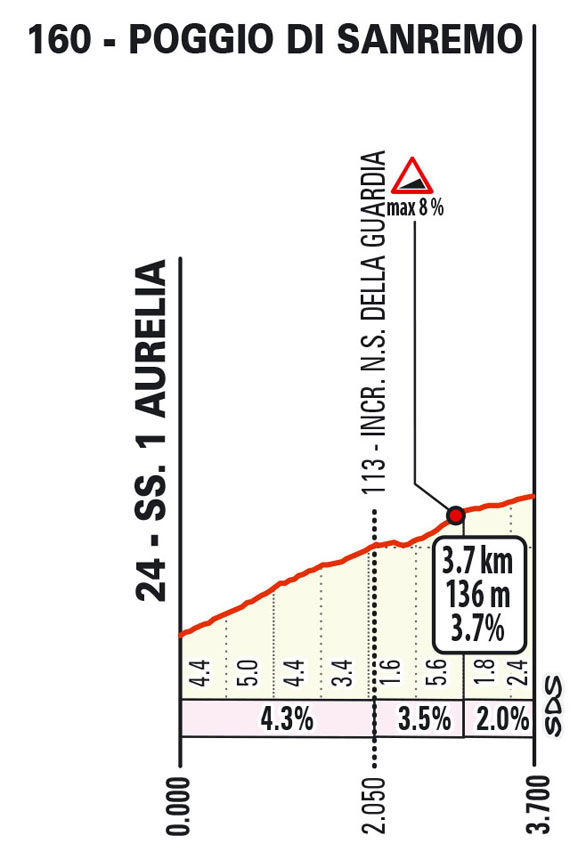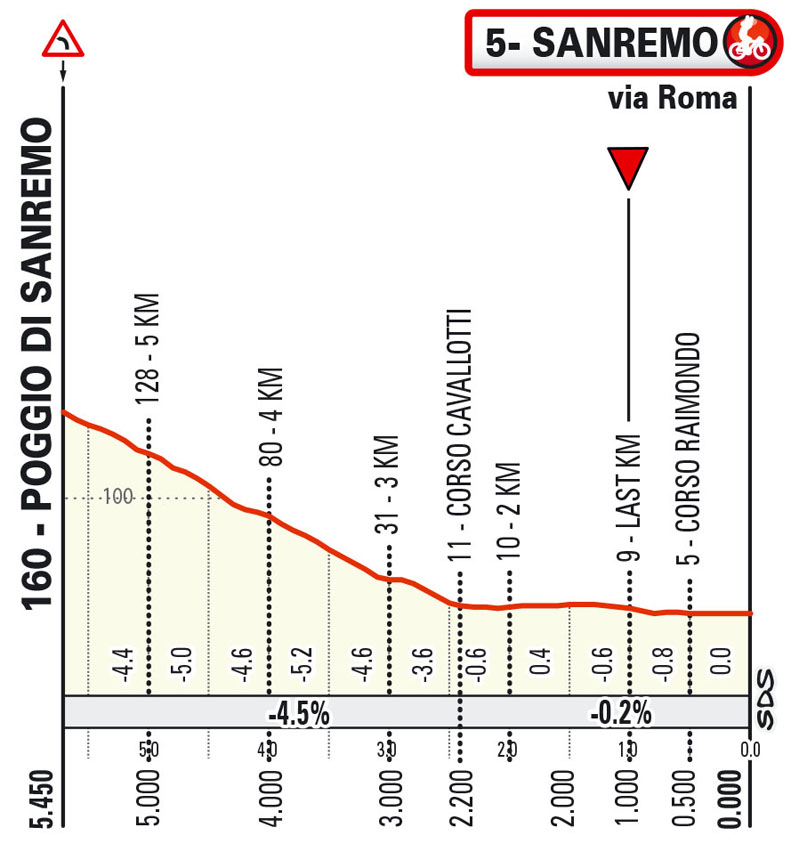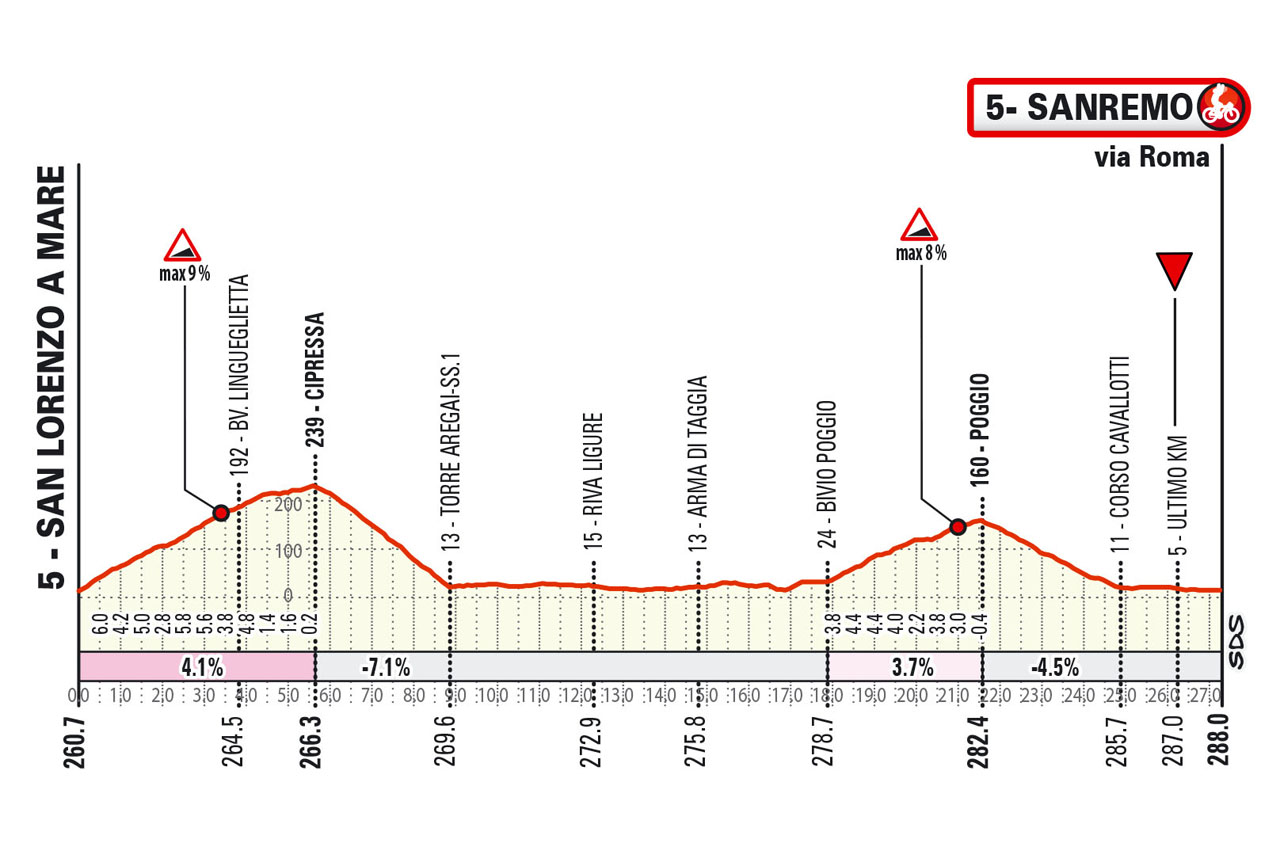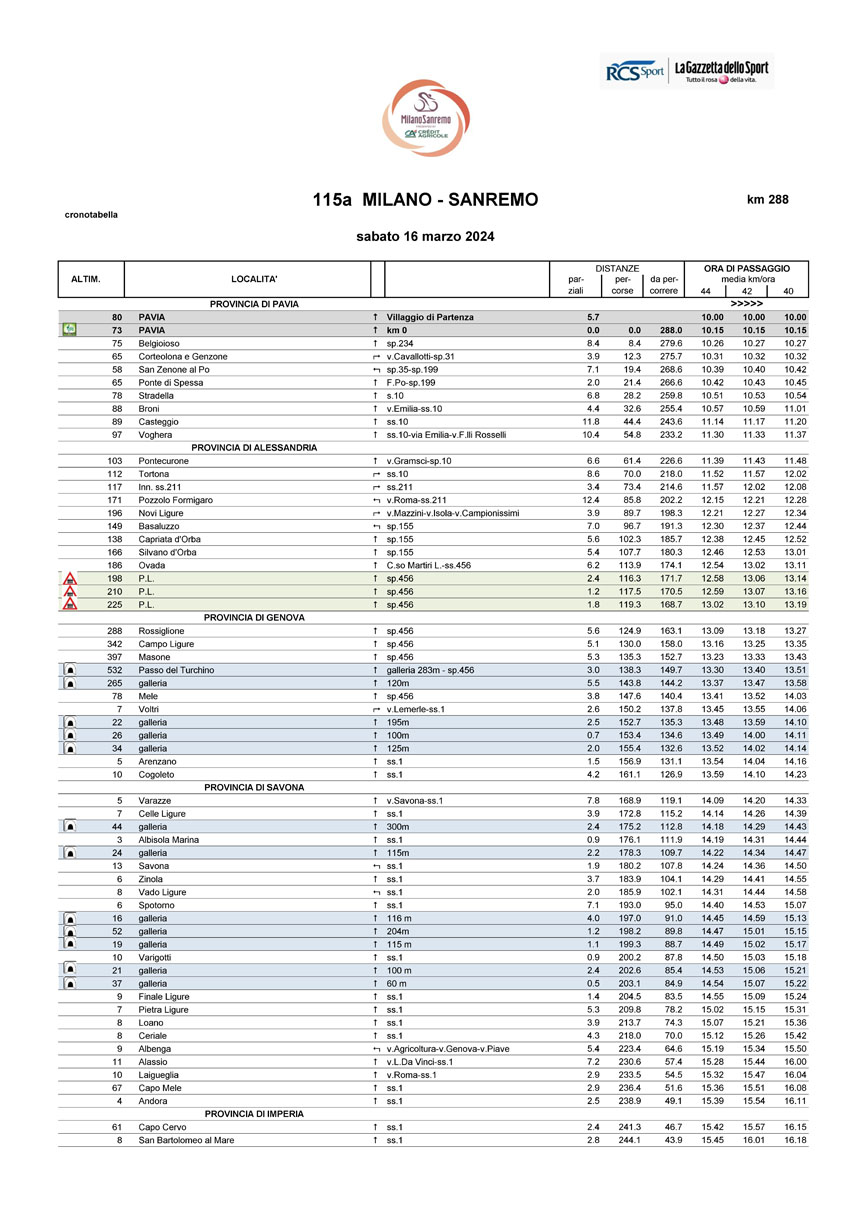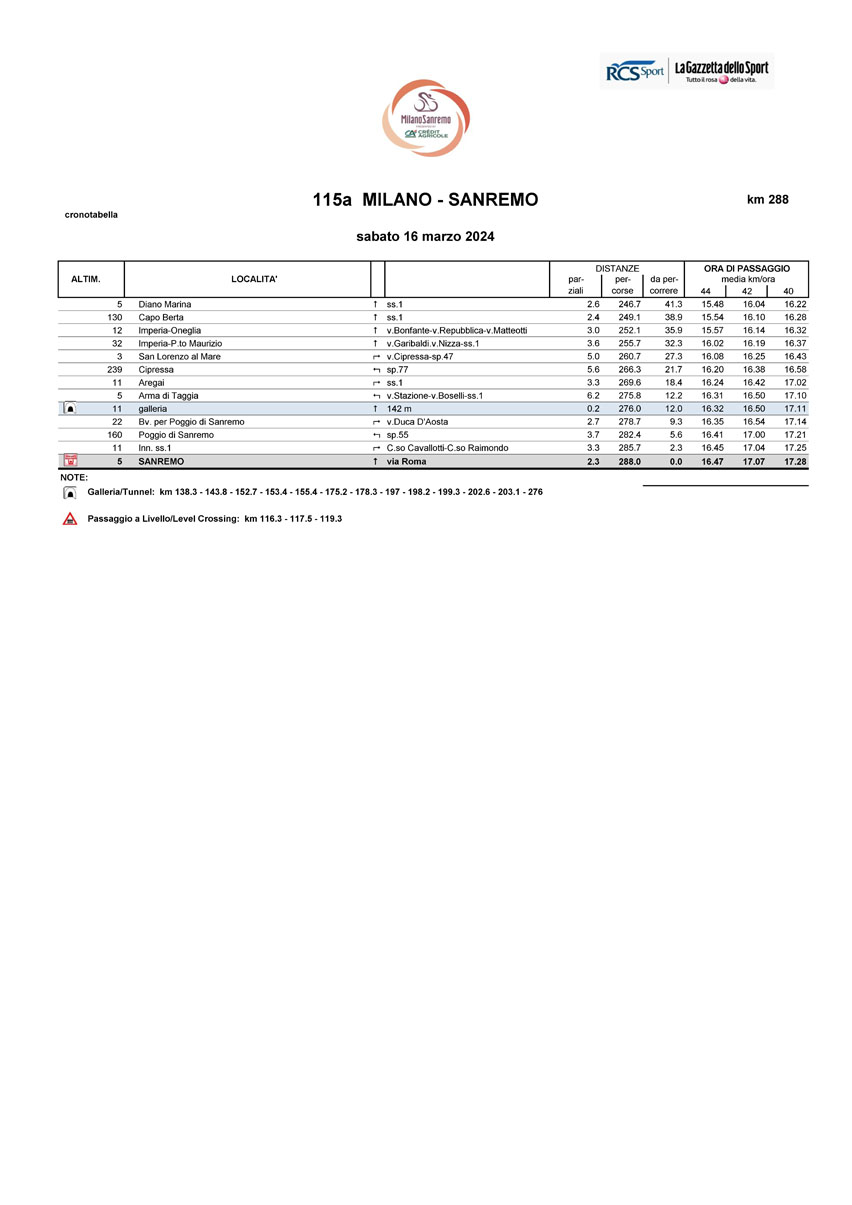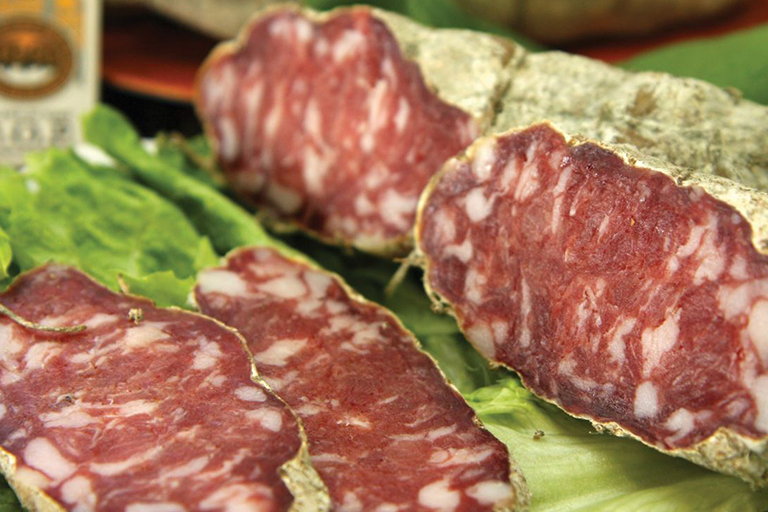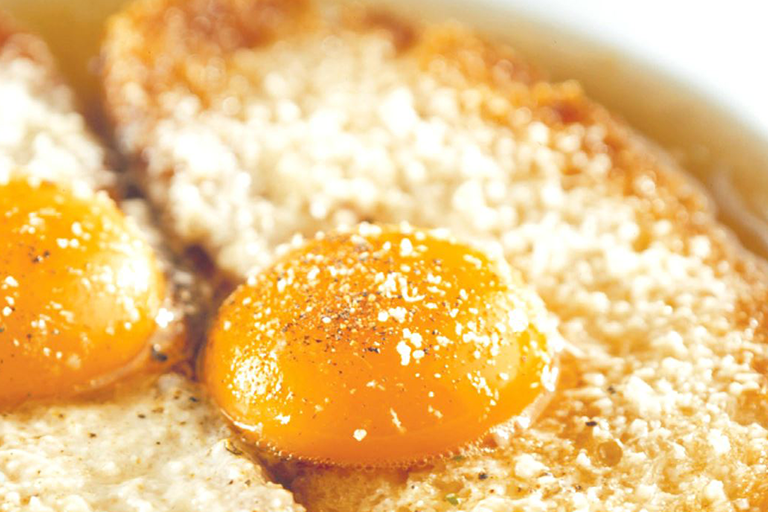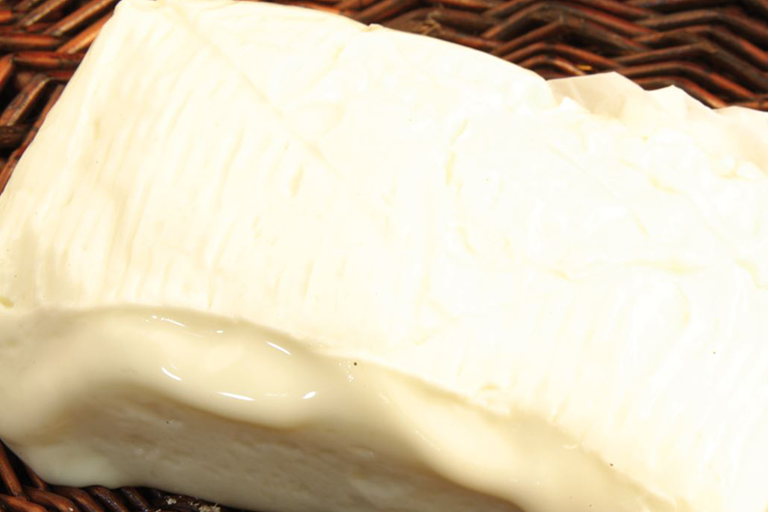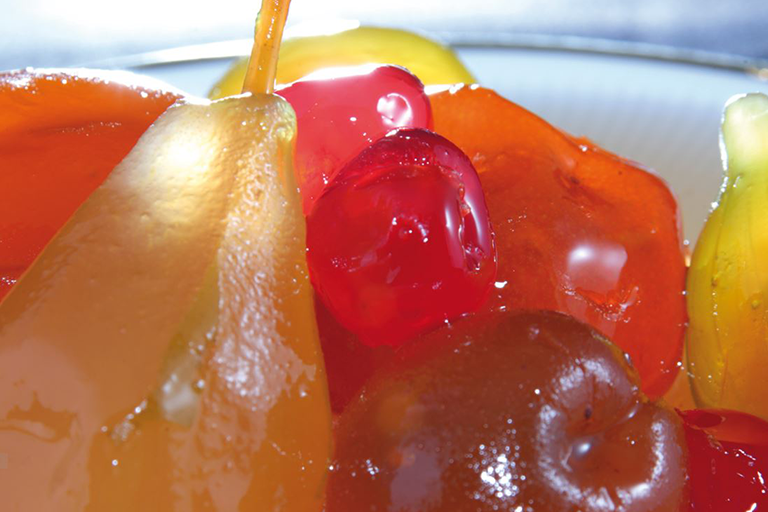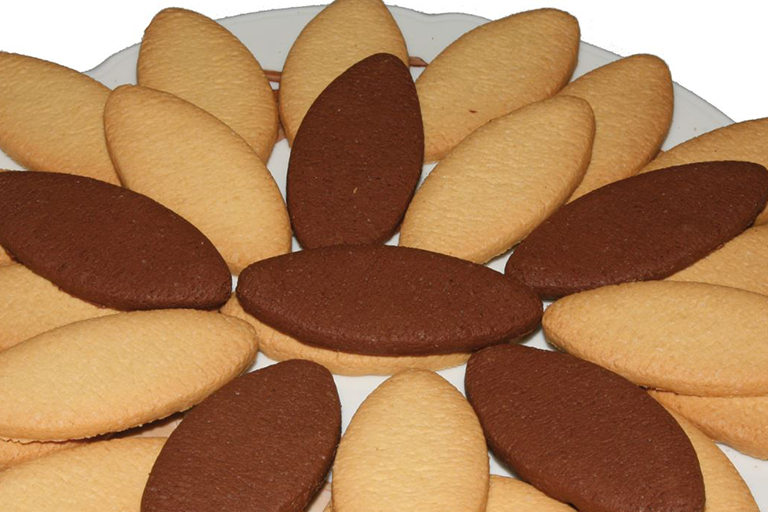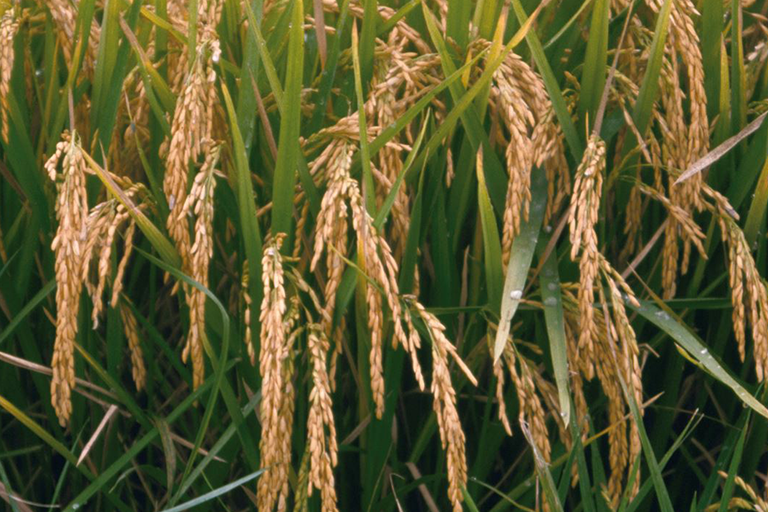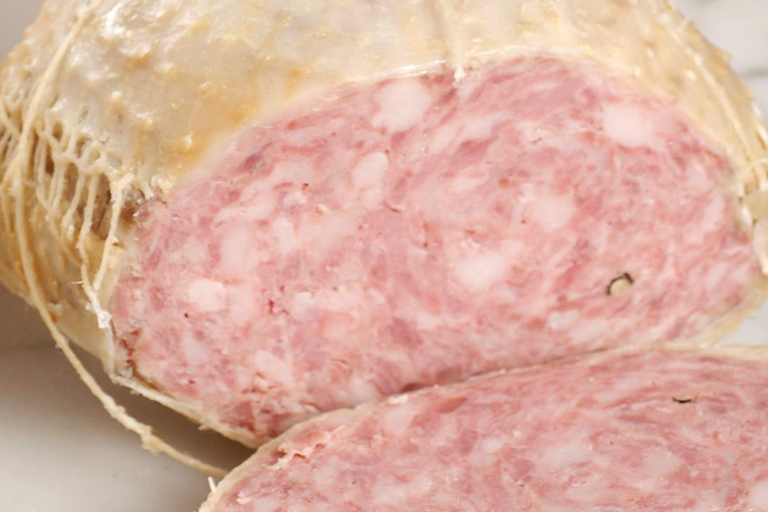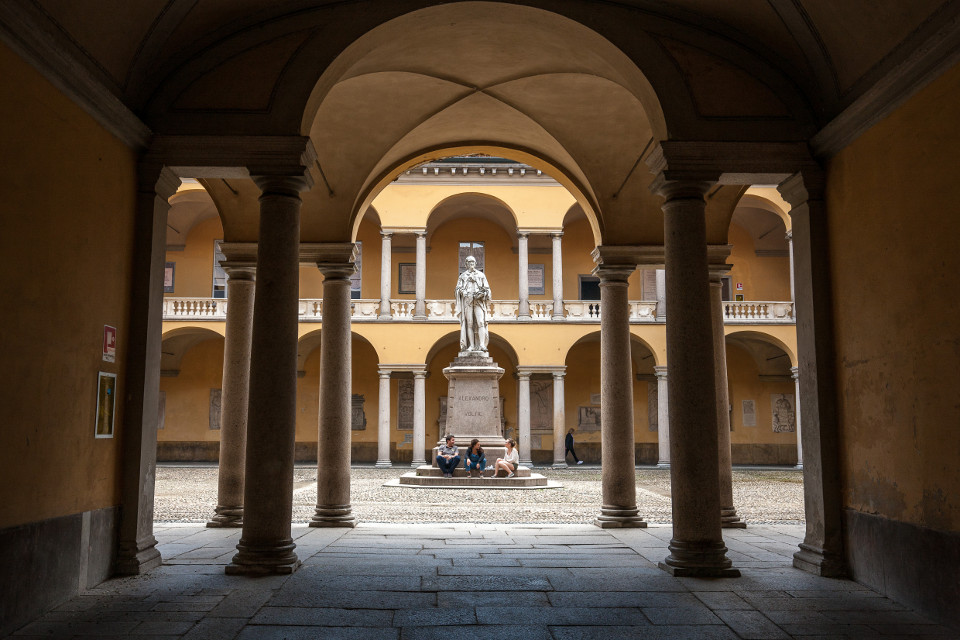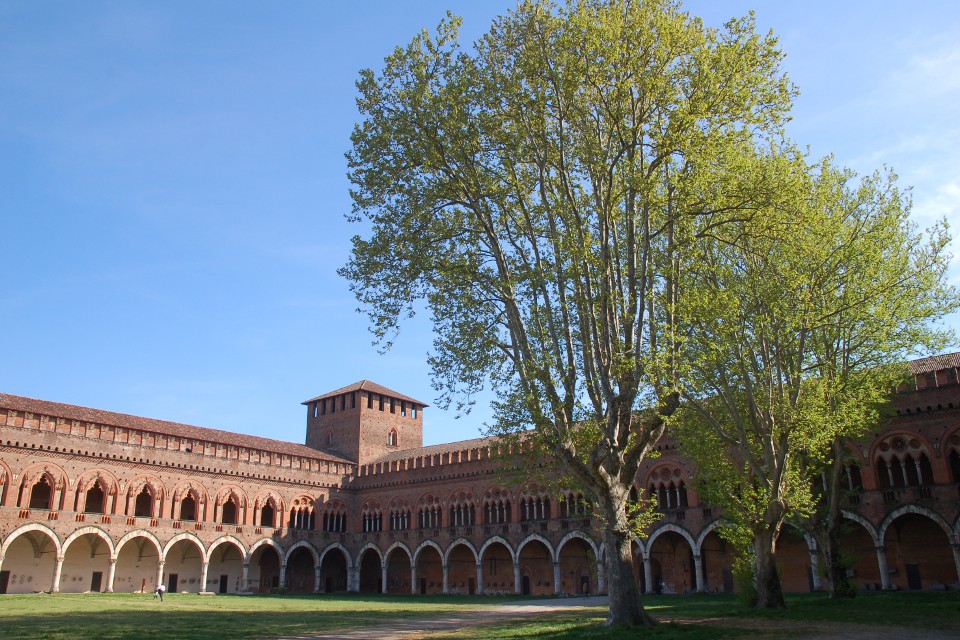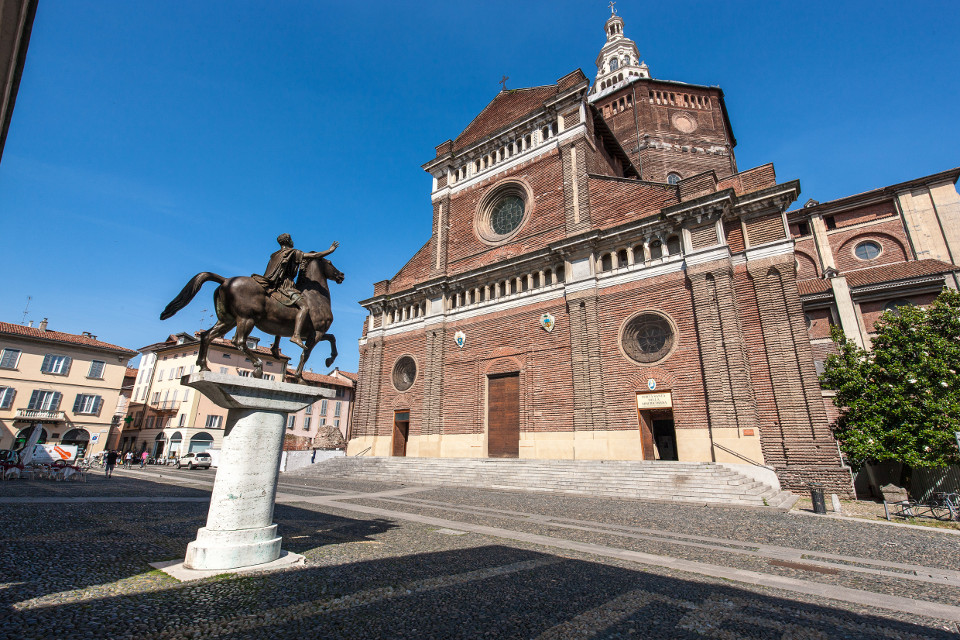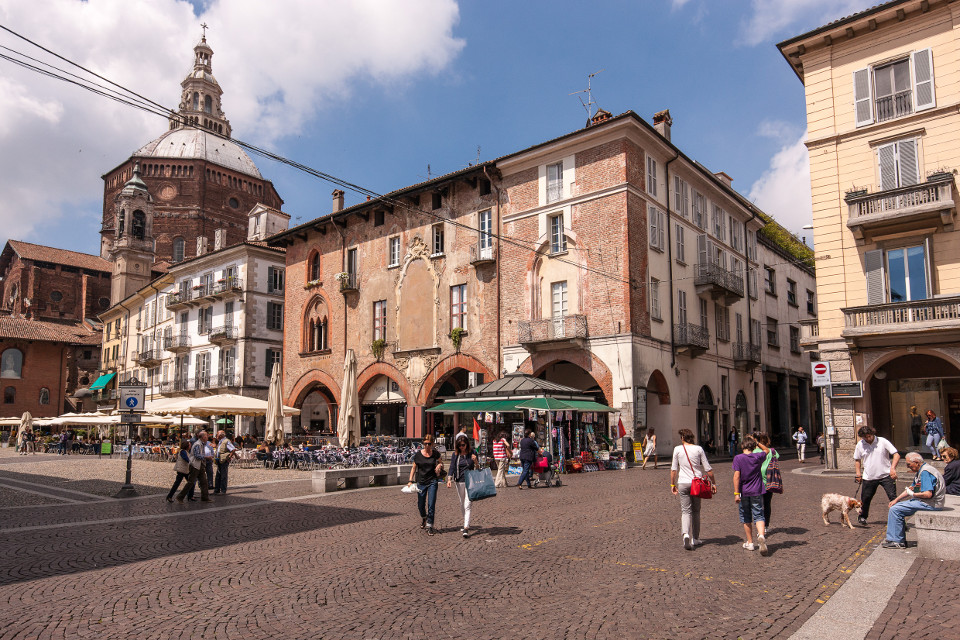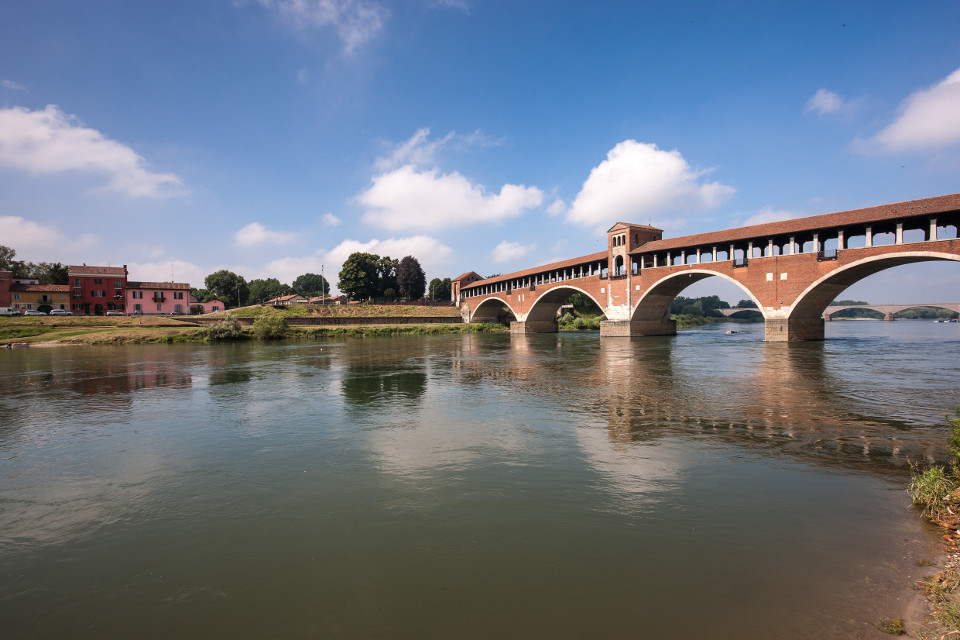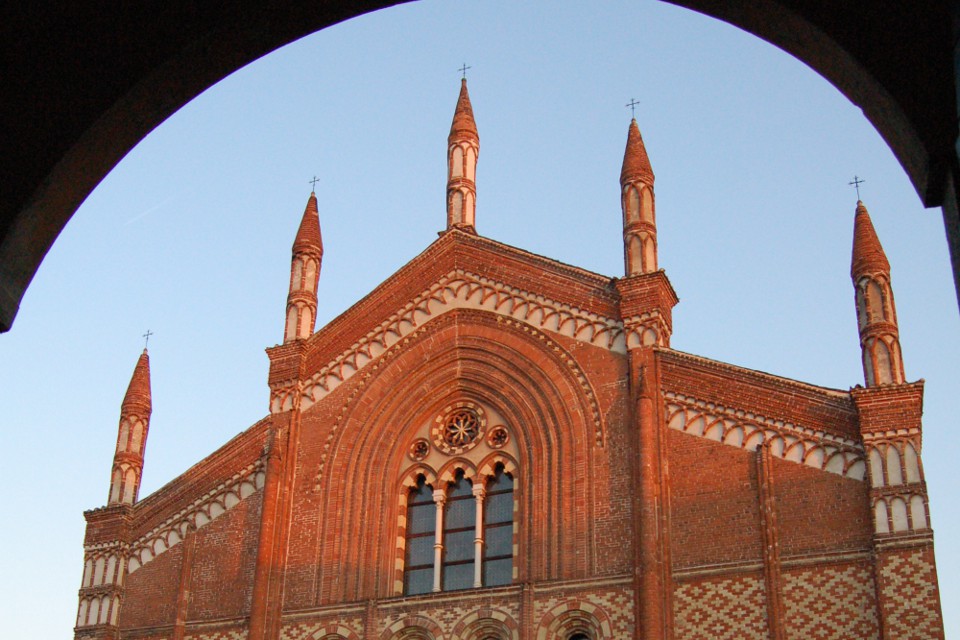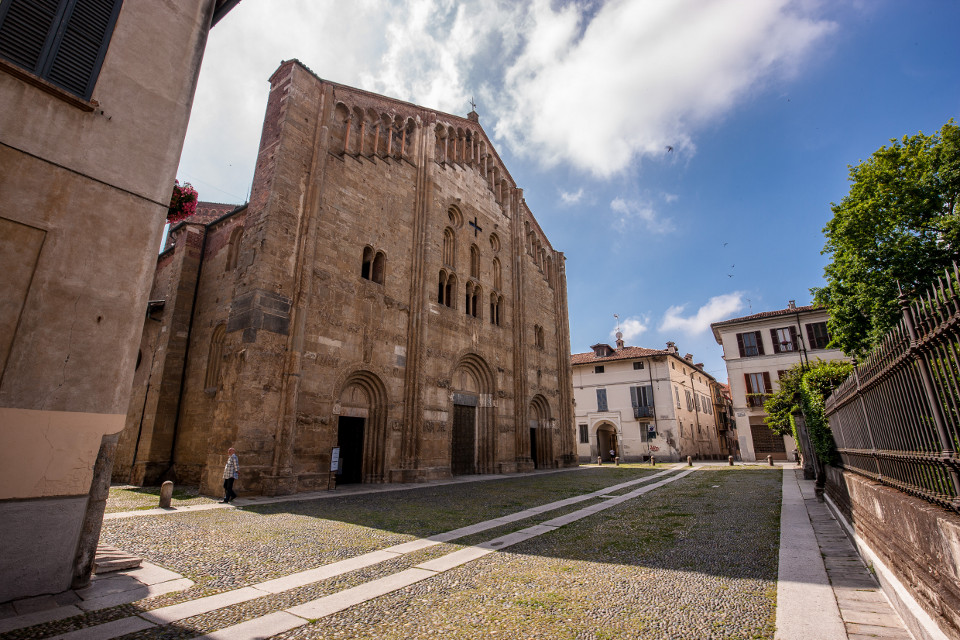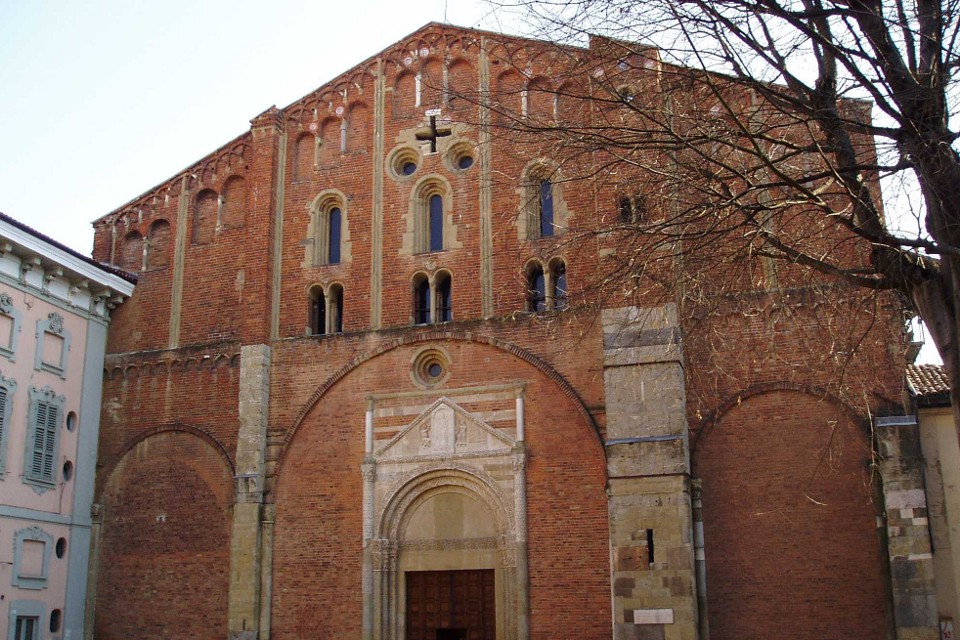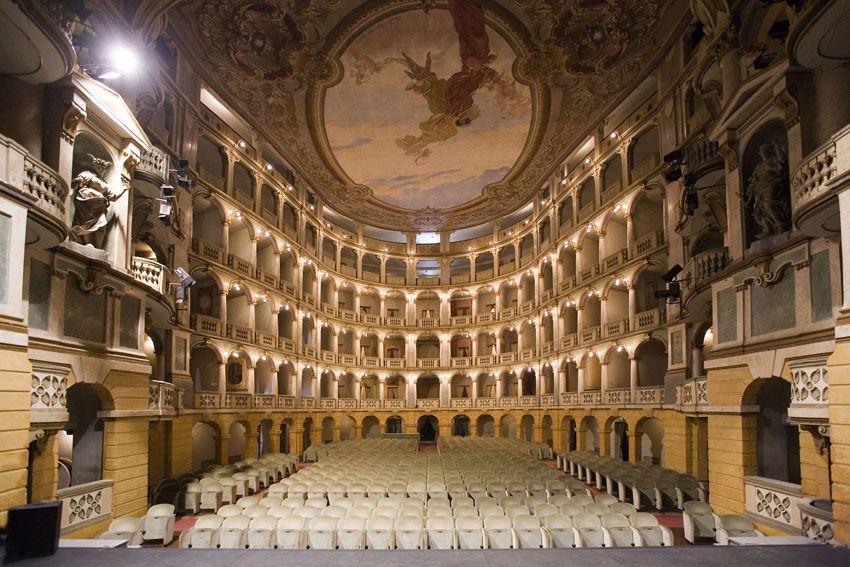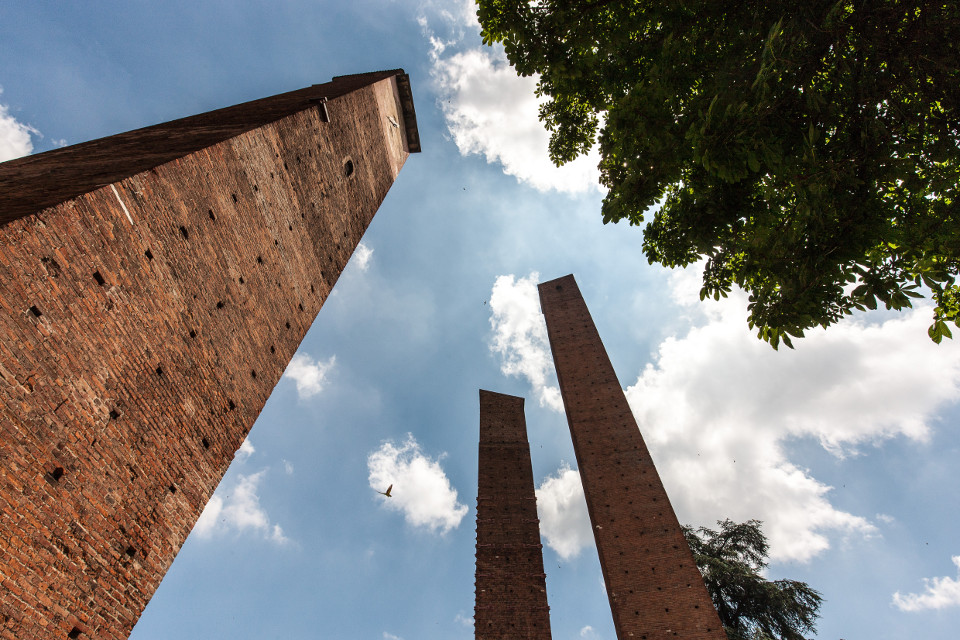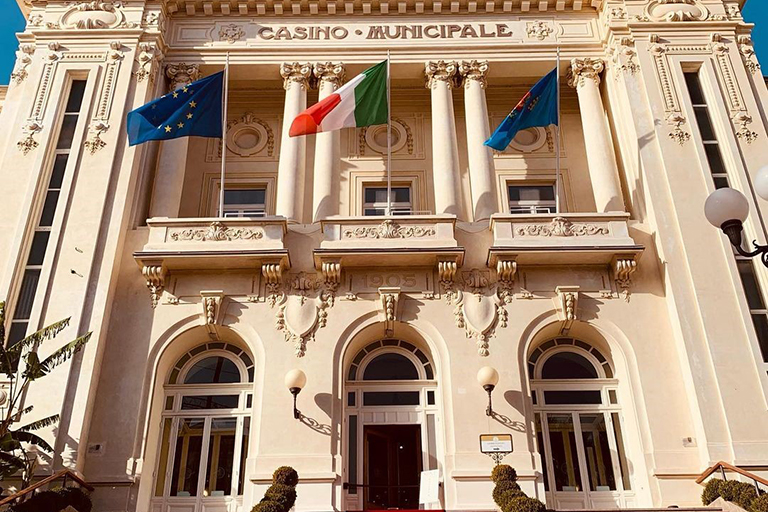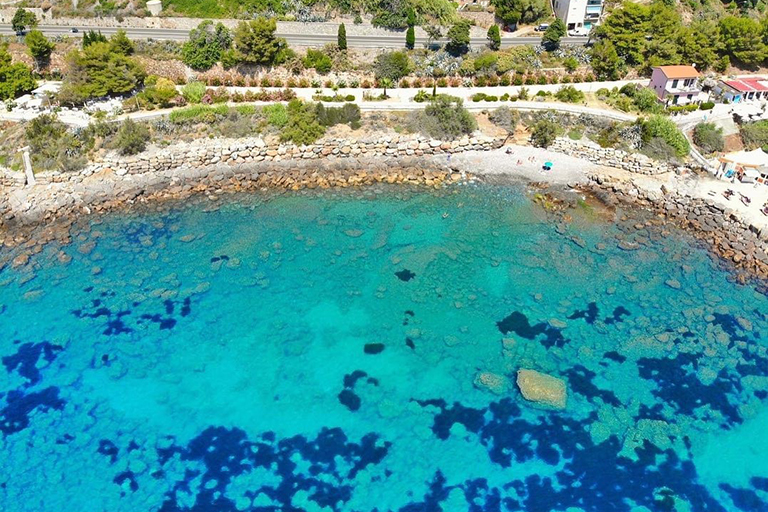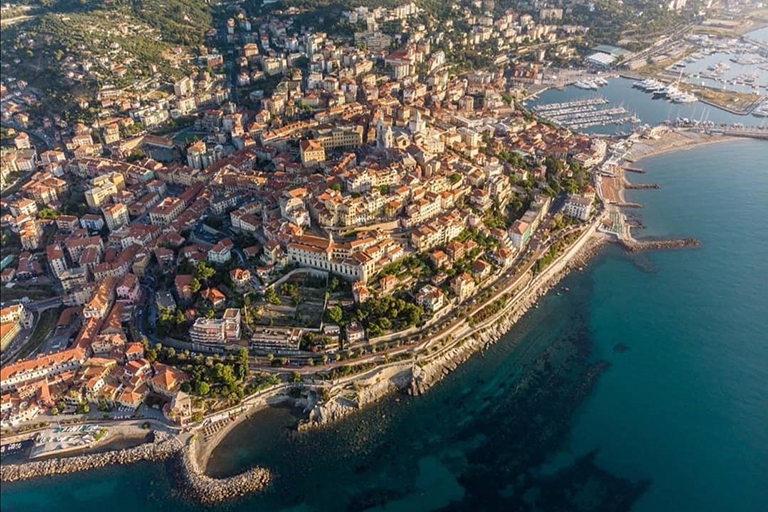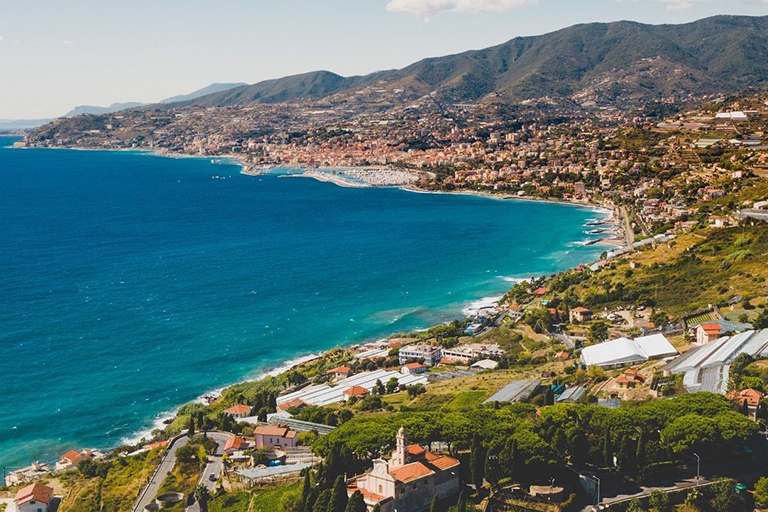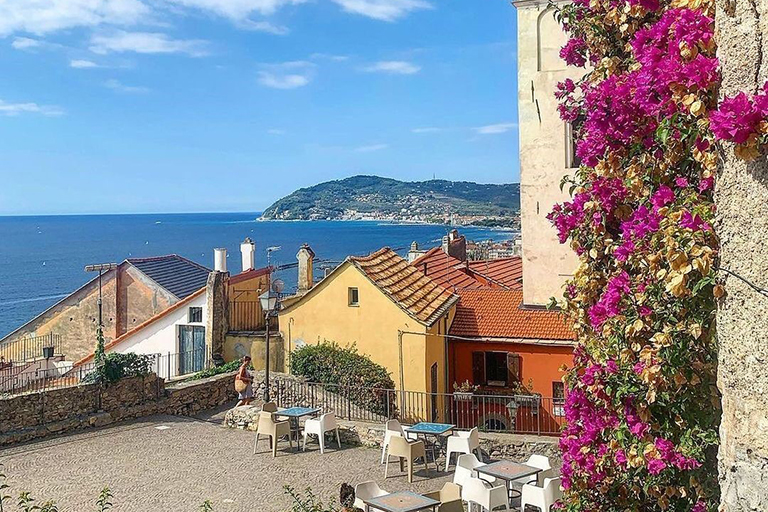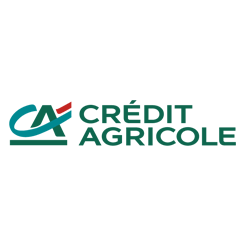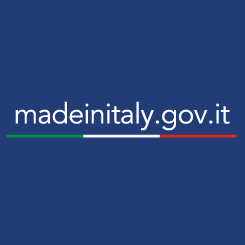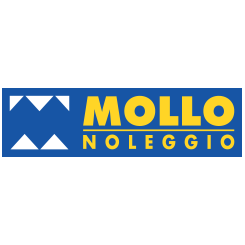learn more
technical info
profile
map
technical info
The 2024 Milano-Sanremo presented by Crédit Agricole starts in Pavia and, after covering around 45 km of flat roads straddling the Ticino river, it merges back to the classic route in Casteggio. From there, the race once again takes the route that has connected Milan to the Riviera di Ponente for over 110 years, through Ovada and the Passo del Turchino, dropping into Genoa in Voltri. From there, it rolls westwards, by the sea, following the Statale Aurelia through Varazze, Savona, Albenga (avoiding the Manie climb, which only featured in the route from 2008 to 2013) and Imperia. In San Lorenzo al Mare, past the classic sequence of the Capi (Mele, Cervo and Berta), the peloton will negotiate the two climbs that have entered the race route in recent decades: the Cipressa (1982) and the Poggio di Sanremo (1961). The Cipressa is just over 5.6 km long with a gradient of 4.1%. The highly testing descent leads back down to SS 1 Aurelia.
Final kilometres
The ascent of Poggio di Sanremo begins with 9 km remaining to the finish (3.7 km, average gradient less than 4%, maximum 8% in the segment before getting to the top of the climb). The road is slightly narrower, with 4 hairpin turns in the first 2 km. The descent is testing, on asphalt switchback roads, narrow at points and with twists and turns as far as the junction with SS 1 Aurelia. The final part of the descent enters urban Sanremo. The last 2 km are on long, straight urban roads. There is a left-hand bend on a roundabout 850 m from the finish line. The last bend, leading into the home straight on the Via Roma, is 750 m from the finish line.
start / finish
climb detail
final kilometres
itinerary timetable
tourist info
Host city:
Pavia
Overview
A city with history and traditions dating back thousands of years and capable of successfully preserving its Roman roots over time, Pavia offers first-time visitors numerous itineraries.
The wealth of Pavia’s historical, artistic and monumental heritage lies not only in its most cited monuments, but also and above all in the countless hidden treasures spread around the city, a real surprise for tourists. The mediaeval quarters, the Ticino river and its boroughs still provide pleasant settings for excursions of one or more days.
Its buildings, especially the Romanesque churches that represent the highest expression of this style, are of considerable interest and continue to arouse great curiosity. Its university, a true cradle of knowledge, and its renowned theatre represent the most modern expression of Pavia’s past.
Food
Pavia and its province have a rich heritage of food and wine products of outstanding excellence, attracting an increasingly sophisticated public, capable of appreciating a genuine offer with ancient traditions and distinguished by numerous quality labels.
Pavia, the Italian capital of rice
85,000 hectares of rice fields and 4,865,000 quintals of total production: Pavia is the Italian province with the highest percentage of rice cultivation and the largest producer of “white gold” at a national and European level, with approximately 1,700 rice farms operating in its territory. Due to its unique geography, this land rich in watercourses and springs was for centuries partly marshy and partly arid, but the communities of monks in the Middle Ages, feudal colonisation and the great agronomic reforms introduced by the Sforza family, who experimented with rice cultivation, shaped the area into a mosaic of fertile fields. To serve these crops, a complex system of irrigation ditches and canals was organised and farmhouses sprang up, first fortified with walls or even castles to defend them, then with closed courtyards, typical settlements of industrialised agriculture in the Po Valley. Rice was imported to Italy by the Arabs who introduced it to Sicily in the 8th century, from there it reached Lombardy in the 15th century thanks to Galeazzo Maria Sforza. Documents testify to a gift of six sacks of rice from the Sforza family to the Dukes of Este in 1475 so that rice could also be cultivated in the Po delta.
Salame di Varzi DOP – Controlled Designation of Origin
Salame di Varzi must be made from fresh pork meat from local farms with the addition of a part of solid fat, cooking salt and black peppercorns; all flavoured with an infusion of garlic and filtered red wine. The consistency of the mixture is rather coarse and is obtained by passing both the meat and the fat through a meat grinder with a mould with holes 12 mm in diameter. The minimum aging period varies depending on the size of the product, which is classified as filzetta, filzettone, crespone and budello doppio. The mixture is tender and compact, the aroma fragrant and distinctive, the flavour sweet and delicate. The so-called “drop”, due to the fat melting in the summer months, which gives a certain pastiness and sweetness to the salami, distinguishes Varzi salami from other products. The DOC Designation is reserved for salami produced in the area around Varzi and 15 municipalities in the Valle Stàffora and Valle Versa. This is a hilly land, between 250 and 1000 metres above sea level, characterised by a unique microclimate due to the meeting of air from the sea with that of the Po Valley. Its origins seem to date back to the time of the Lombard invasion, after which pig breeding spread in the area.
Crescenza cheese – Traditional Food Products (PAT Designation)
It is a product originating in the Province of Pavia, with a short maturing period, obtained from pasteurised whole cow’s milk. A soft cheese with an uncooked, homogeneous, compact and white paste, Crescenza is a cheese with no rind, even if drier on the surface. Its wheels are parallelepipeds weighing between 250 g and 1 kg. It is produced in two varieties: the winter one with a soft dough tending to creamy and the summer one more consistent. The flavour varies from the sweetness of the fresh product to the slightly sour but always delicate.
Voghera mustard
A speciality of whole candied fruit dipped in sugar and glucose syrup flavoured with mustard usually accompanying boiled meats and fresh cheeses such as ricotta and stracchino. The Voghera area has traditionally cultivated fruit trees and, since the Middle Ages, the abbey of Sant’Alberto di Butrio has preserved the fruit with the addition of mustard and must. In a letter of 1397, Duke Gian Galeazzo Visconti asked the Podestà (in medieval Italian communes, the highest judicial and military magistrate) of Voghera for a supply of candied mustard fruit for the roasts and meat on his table: fruit mostarda was already produced in Oltrepò and known as far as Milan.
Mortara goose salami IGP – Protected Geographical Indication (IGP Designation)
It is obtained from the meat of geese born, raised and slaughtered within the Lombardy region. The cuts used are: 30-35% from the lean parts of the goose, 30-35% from the lean parts of the pig, 30-35% from the fat parts of the pig. The mixture, to which salt, pepper and natural flavourings are added, is wrapped in goose skin and takes the shape of a goose neck or tubular. It is then perforated and tied and kept in ventilated rooms for 1 to 3 days. After drying, it is cooked in hot water and left to cool. The colours are white from the fat, dark red from the goose meat, pinkish from the pig. It is served cold with mustard and/or sweet and sour sauces. Among its creators were the Jewish communities who, at the time of Ludovico il Moro, commissioned local charcutiers to make goose salami in honour of kosher cuisine.
The Pavese Soup
On 24 February 1525, an extraordinary and memorable battle between the French and Spanish armies took place in Pavia. The resounding defeat of the French and the capture of Francis I effectively marked the beginning of Spanish domination over Italy, which lasted for many centuries. The battle is linked to the birth of “Pavese-style soup”, which, according to legend, was served to Francis I by a peasant girl from the Repentita farmstead where the king, distraught and wounded, was carried immediately after his capture. A peasant woman prepared what little she had for the king: broth and sliced stale wholemeal bread. After toasting the slices, she placed the bread in a wooden bowl, broke a raw egg over it and poured the boiling broth into the bowl, to which she might have added some cress leaves. The soup, the legend goes, was much appreciated by the king.
Offelle di Parona
This typical confectionery speciality from Parona, in the Lomellina region, has recently turned one hundred years old. Soft wheat flour, butter, sugar, eggs, olive oil and yeast are the ingredients of this unmistakable oval-shaped biscuit with pointed ends. The recipe was invented by two enterprising Paronese sisters, Pasqualina and Linìn Colli, who created this speciality at the end of the 19th century without ever disclosing the recipe to anyone. Initially, the biscuits were produced in limited quantities and sold by the number, rather than by weight, so valuable were they. On the occasion of Our Lady of the Rosary, Offelle were prepared for the popular feast and people came from neighbouring towns to taste the delicious biscuit. The big commercial launch of the Offelle came in 1969. Since then, the local Pro Loco (grass-roots organizations that seek to promote some particular territory, almost always a town and its immediate area) has been protecting the genuineness of the biscuit through a guarantee mark provided to the producers, who have replaced the old home bakeries.
Wines and Beverage
Oltrepò pavese, a land of grapes
Oltrepò Pavese boasts a viticultural history of at least 2000 years. It is an Apennine and pre-Apennine district located in the southern area of the Province of Pavia, on the border with Piedmont and Emilia Romagna. A territory shaped like a bunch of grapes – this is how the great Gianni Brera thought of it – whose surface area covers almost 100,000 hectares, mostly located in hilly and mountainous areas. The hills are on average no higher than 3-400 metres above sea level, with a rather dry climate in winter and windy in summer and high temperature excursions due to the upward currents of the mountain areas. These characteristics make the Oltrepò a prefect area for grape and wine production. There are two morphological zones: the soils of the lower hilly area, made up of marine sedimentary rocks with a significant clay component, and the higher ones of chalky origin, both of which are perfect for different types of white, sparkling and red wines produced there. The territory has one DOCG (the highest designation for Italian wines, literally “Denomination of Controlled and Guaranteed Origin”), one DOC (literally Controlled Designation of Origin) and one IGP (literally “Protected Geographical Indication”). The 13,500 hectares under vine, out of a regional total of 24,000, represent about 55% of the area under vine in Lombardy. 1700 wineries are located in Oltrepò, most of them medium-small family-run. The hills of Oltrepò produce 62% of Lombardy’s wine. The areas registered in the DOC/DOCG vineyard registers and vineyard lists amount to 12,857 hectares under vine in the province of Pavia out of a regional total of 20,500 hectares. With 600,000 hectolitres of DOC and DOCG wine, plus over 300,000 hectolitres of IGT wine, produced on average each year. Oltrepò, with its 42 municipalities located in hilly areas, is the third most important DOC area in Italy, after Chianti and Asti.
Points of Interest
The Visconti Castle
Its construction was started by Galeazzo II Visconti in 1360 and finished in only five years. More than a military defence castle, it was a splendid and refined sovereign residence. Some significant testimonies remain of the great frescoes depicting battles, hunting scenes and courtly life that once adorned the halls, porticoes and loggias. Among these is the complete decoration of the Sala Azzurra (the blue room), splendid with gold and lapis lazuli, and that of the upper floor of the same tower, perhaps home to the renowned Visconti library, ordered by Francesco Petrarca. Used for centuries as military barracks, in the 20th century the Castle was purchased by the Municipality of Pavia, fully restored and turned into a cultural venue: the building currently houses the various sections of the Civic Museums and temporary art exhibitions.
The Cathedral
Starting in 1488, the citizenry of Pavia promoted the rebuilding of a Cathedral in Renaissance style to replace the old Romanesque cathedrals of Santo Stefano and Santa Maria del Popolo. The project was initially entrusted to the architect Bramante from Urbino, under the consultancy of Leonardo da Vinci, and then continued under the supervision of Amadeo from Pavia. The ambitious construction met some difficulties in the 17th and 18th centuries, but the 19th century finally saw the realisation of the dome (the third largest in Italy) and the front. Testifying to the initial grandeur and refinement of the project is the amazing wooden model, carved in the first quarter of the 16th century by skilled local craftsmen in the Civic Museums. Opposite the Duomo, the bronze statue of Regisole is a modern copy by F. Messina of the original Ravenna war trophy, which was unfortunately destroyed by the Jacobins.
Piazza Vittoria
Piazza Vittoria is the city’s main square. Bordered by the intersection of two of the city’s main streets, Strada Nuova and Corso Cavour, it used to be the site of trade negotiations and the city market. Almost entirely enclosed by 14th-century arcades, the square is bounded by the ancient palazzo del Broletto and the noble Gothic palazzetto ‘dei Diversi’. Also overlooking the square is the deconsecrated church of Saint Mary Gualtieri, founded in the 10th century at the behest of the imperial representative Gualtiero, who had it erected near his residence. Today, it is used as a municipal space for temporary cultural exhibitions. At several points in the square, it is possible to access the underground market, built in modern times.
Ponte Coperto
Rebuilt in the mid-14th century to replace the ancient Roman bridge (the piers of which can still be seen today), it connects the historical city centre with the picturesque medieval village on the other side of the Ticino River, a traditional location for washerwomen, gravel pits and fishermen. Its distinctive feature, which makes it the evocative symbol of Pavia, is its roofing, commissioned by Galeazzo II Visconti in the aftermath of the conquest of the city, and the presence of an 18th-century chapel dedicated to St John of Nepomuk. Bombed in World War II, the bridge was rebuilt in the early 1950s.
The Church of Saint Francis
The Church of Saint Francis (also known as the Church of San Francesco Grande) seems to have been completed in the year 1298 and was built as the site of a Franciscan convent. Despite redecoration during the Baroque period and heavy renovation work in the 19th and 20th centuries, the building still retains its Gothic structure, typical of Franciscan settlements. In fact, it presents a Latin cross layout with three naves with a clear distinction between the presbyterial area, destined for the officiating and covered by ribbed cross vaults supported by bundled pillars, and the body of the naves, reserved for the faithful, covered by exposed wooden trusses and marked by cylindrical pillars. The façade, divided into three sections so as to herald the internal division into three naves, plays on a lively two-colour scheme, resulting from the combination of terracotta and white stone, and is characterised by a slightly salient profile crowned by five pinnacles. In the centre there is a twin portal (unusual, but sometimes utilised by mendicant orders) in the lower part and a large triple lancet window in the centre of the upper one. Inside, enriched by splendid paintings, are some of the sacred furnishings from the deconsecrated Church of Saint Mark (or Saint Francis of Paola) and the Chapel of the Immaculate Conception, built from 1711 onwards to a design by Giovanni Ruggeri and later completed by Antonio Longone and Luigi Malaspina. The adjacent Franciscan convent, currently home to the Cairoli College, was rebuilt in the 18th century to a design by Giovanni Ruggeri and was later completed by Leopoldo Pollach.
Saint Michael’s Basilica
A masterpiece of Lombard Romanesque architecture, the basilica features a grandiose three-nave layout, surmounted by the tiburium, and is richly decorated with sculptures on the façade, reliefs and zoomorphic bands, and cornices with spirals and plant shoots. Today’s building was raised on the site of the previous Lombard church and served as the site of royal coronation ceremonies: Frederick Barbarossa was crowned here in 1155. The interior is adorned with capitals carved with stories from the Bible and allegorical figures and has an impressive crypt. On the presbytery, it houses the floor mosaic depicting the “Months” and the “Labyrinth” and, in the transept, the crucifix known as the Theodotus crucifix, a silver-foil masterpiece by a master goldsmith active in northern Italy in the second half of the 10th century.
San Pietro in Ciel d’Oro
The building, renovated in the 12th century in Romanesque forms, owes its European fame to the presence of the remains of St Augustine, which were moved here in the 8th century from Sardinia at the behest of the Lombard king Liutprand, who also rests in the church. To the “Father of the Church” is dedicated, on the presbytery, the monumental marble ark, adorned with many statues and sculpted reliefs, executed between 1362 and 1402 by Lombard masters. A plaque on the exterior of the basilica bears the words of Dante, who mentioned the basilica for another illustrious burial, that of the philosopher Severinus Boethius.
The Fraschini Theatre
The city’s first public theatre is the result of the initiative of four members of the local aristocracy, hence the ancient name “Theatre of the Four Knights”. The project, erected between 1771 and 1773, was entrusted to one of the greatest theatre architects and set designers of the time, Antonio Galli Bibiena, who built it entirely in masonry with innovative and ingenious solutions – including the bell shape of the stalls – to optimise acoustics. Recognised as a “theatre of tradition”, every year it offers an opera season (from October to January) and a theatre season featuring prose, music and ballet.
Medieval towers
Of the hundred or more towers that marked the profile of the medieval city, only five still stand today: three in the University Square and two in Via Luigi Porta. They all date back to the 11th – 12th century and are built of brick, with a barrel shape that narrows towards the top: their function was mainly symbolic, a physical representation of the power of the ruling family. Remains of smaller towers can still be seen today, incorporated into various town buildings. The Civic Tower, located next to the mediaeval cathedrals and crowned in the 16th century by a marble loggia serving as a belfry, fell ruinously in 1987, only its remains are visible today.
University
It is one of the oldest universities in Europe: Galeazzo II Visconti promoted its opening in 1361, launching courses in law, medicine and the liberal arts. Since then, the University underwent various transformations until it took on its current layout and architectural shape thanks to the intervention of the Austrian government. During the Habsburg era, the institution was reformed and the buildings were renovated in Neoclassical style and enlarged by architects Piermarini and Pollack with new lecture halls: among them, the Library known as the “Teresiana”, the Anatomical Theatre by Antonio Scarpa and the Theatre of Physics, where Alessandro Volta presented the invention of the battery to Napoleon. In the 20th century, the University also occupied the structure of the neighbouring Saint Matthew’s Hospital, a Renaissance cruciform building flanked by courtyards with terracotta decorations.
Sanremo
Touristic information
Lying along the sun-drenched Riviera dei Fiori, Sanremo has a mild and pleasant micro‑climate, as compared to other cities of the region, which makes it the perfect tourist destination.
It is renowned for flower farming (hence its nickname, ‘the city of flowers’) and for a traditional parade of flower-covered floats held every year in the spring, called ‘Sanremo in fiore’. Other famous events taking place in Sanremo every year include the Italian Song Festival, aired by the national broadcaster Rai, and the Rassegna della canzone d’autore, organised by the Club Tenco.
The old town centre (nicknamed La Pigna, ‘the pine cone’, after the shape of its ancient defensive walls) reflects the glorious past of the city. Main sights include the Basilica Collegiata Cattedrale di San Siro, the sanctuary of Madonna della Costa, the hermitage of San Michele, and the Church of Cristo Salvatore, built in the late 19th century by the Russian nobility, nowadays one of the symbols of the town, together with the Casino, nearby, one of the three remaining in Italy.
Notable sights also include many private mansions built along the promenade: Palazzo Bellevue (which has been a luxury hotel for many years, and became the city hall in 1963); Palazzo Borea d’Olmo (one of the major Baroque buildings of western Liguria, a few metres away from Teatro Ariston); Villa Ormond (renowned for its park, with many exotic plants); Villa Nobel (built in Moorish style, the last place where Alfred Nobel lived, currently a museum and a venue for cultural meetings), Villa King, nearby (Art Deco), and Castello Devachan (the venue of the meeting of the victorious Allies after the end of World War I in 1920).
Speaking of sports, the city is renowned as finish location of Milano-Sanremo (one of the major springtime classics on the international cycling calendar), and it has been the venue of an iconic automobile rally since 1928.
Videos Milano-Sanremo 2024
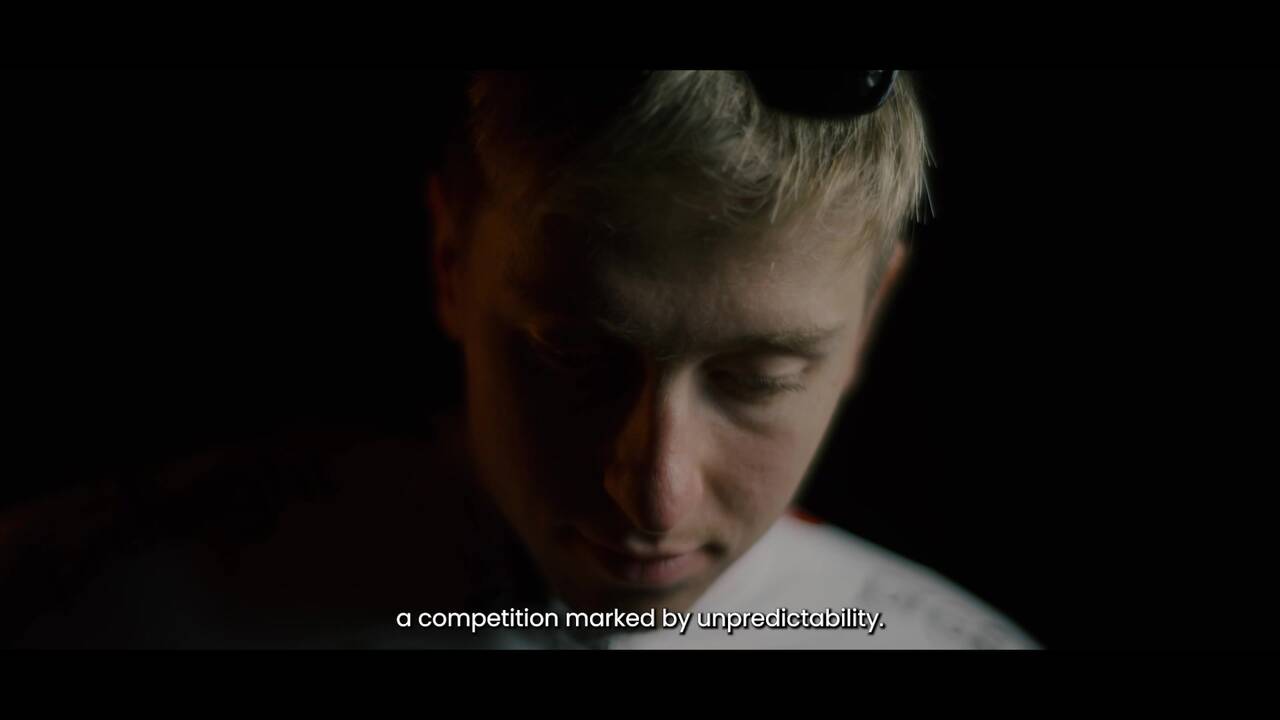
Milano-Sanremo: the unpredictable
20 Mar 2024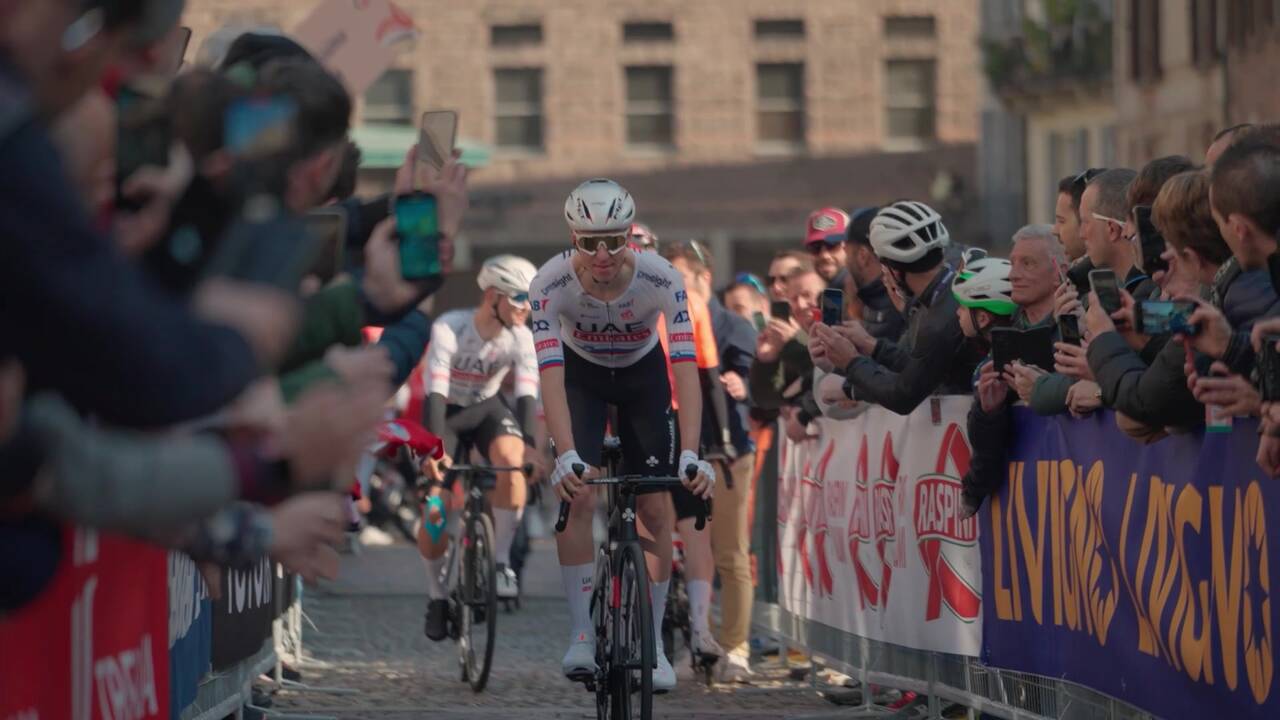
Milano-Sanremo presented by Crédit Agricole 2024 | Highlights 🇮🇹
16 Mar 2024
Milano-Sanremo presented by Crédit Agricole 2024 | Highlights 🇬🇧
16 Mar 2024Photos Milano-Sanremo 2024
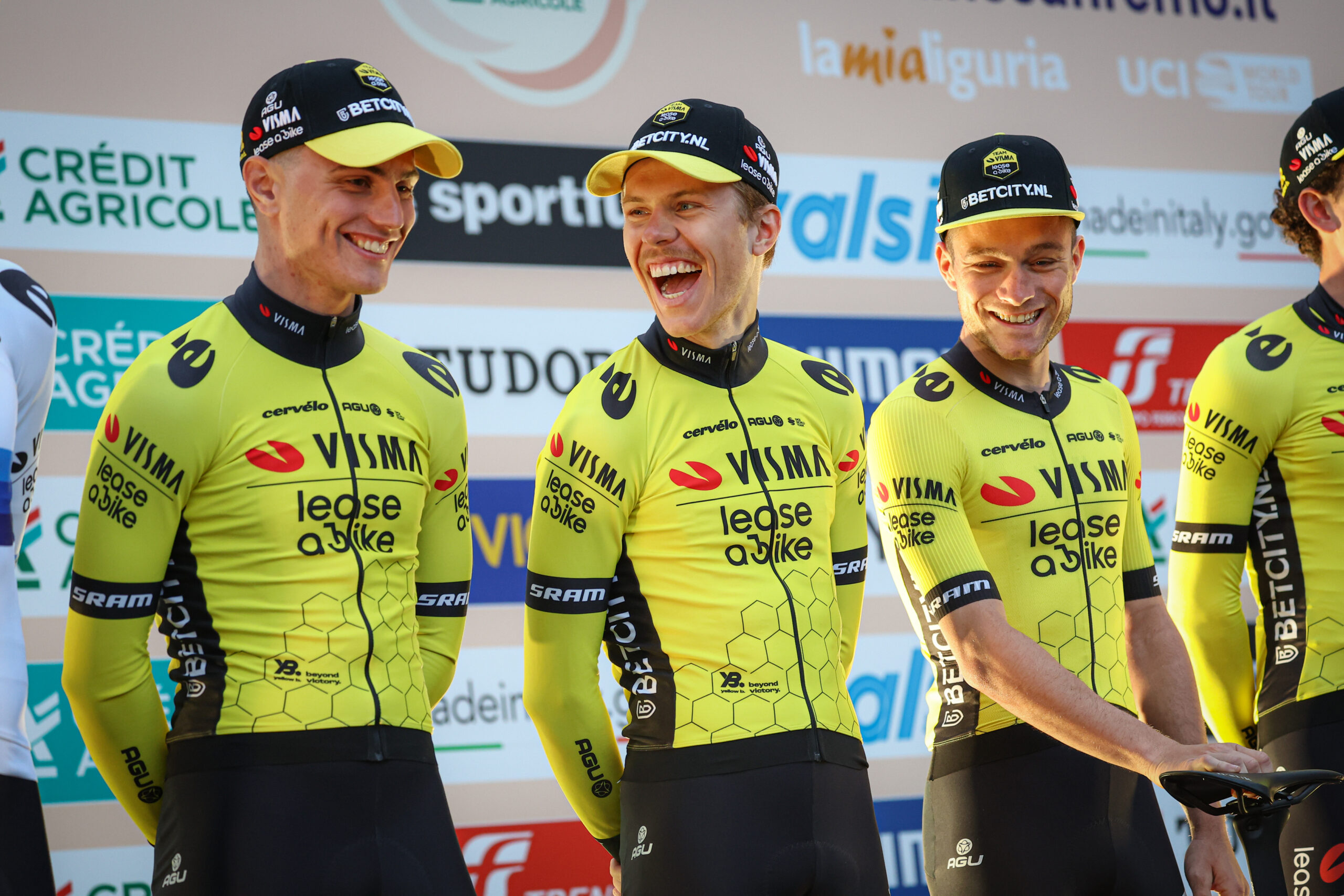
Milano-Sanremo presented by Crédit Agricole 2024 | Teams Presentation
16/03/2024

